(http://www.shape.k12.ca.us/TCU/gravity3.htm)
Students can construct a parachute and test for rate of descent. This
activity is a part of the " Sharing
Aeronautics Projects Electronically" site that includes a number
of experiments on force, atmosphere, weather and map reading.
(http://web-hou.iapc.net/~koops/vivarium/vivarium.html)
An interactive simulation of the evolution of behavior. Lifeforms
live and adapt on screen, under your influence. This downloadable
program is an introduction to the priciples of life.
(http://espnet.sportszone.com/editors/studios/sportsfigures/page6.pdf)
Helps students understand the principles of potential energy and
springs while using the sport of bungy jumping to illustrate these
topics.
ESPN Sports Figures has a large number of detailed lessons that
teach core physics concepts.

(http://www.grc.nasa.gov/WWW/K-12/aerosim)
This downloadable program is an interactive flow simulator that
determines the airflow around various shapes of airfoils, including a
flat plate and a baseball. Several lessons on basic aerodynamics are
included with the simulator package.
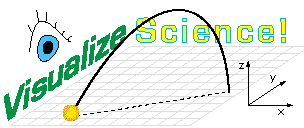
(http://www.ppsa.com/ppsa/science/density.htm)
This interactive lab allows students to do "virtual" measurements of
mass and volume(via water displacement) for a variety of objects.
Many other interactive experiments that include mechanics, life
sciences, energy and matter can be found at the Shockwave
Science site.
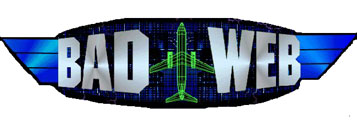
(http://fornax.arc.nasa.gov:9999/badweb/badweb.html)
Provides insight into the art and science of aircraft design. It's
interactivity allows students to participate in the kind of
trade-offs and decisions that aircraft designers face on a daily
basis. You too, can design a subsonic transport!
(http://www.allstar.fiu.edu/aero/fltmidfly.htm)
Discusses the forces of lift, gravity, thrust, and drag, and the
combination needed to get the plane off the ground. This lesson is a
part of the AllStar
Network an aeronautic learning laboratory for science, technology
and research. Level of interest choices are available for lower
middle, upper middle, and high school level activities.

(http://nasaui.ited.uidaho.edu/nasaspark/Watrstrw.htm)
Demonstrates Bernoulli's principle of air pressure. An experiment
that students can actually do. This site is part of
The NASA Spark Site for Educators.

(http://wings.ucdavis.edu/Guide/Activities/design/intermediate/design_a_plane.html)
This site details an experiment that allows students to design planes
for best control, accuracy, and time aloft. A number of other
activites are included in the K-8
Aeronautics Internet Textbook. http://wings.ucdavis.edu/
(http://www.exploratorium.edu/exhibits/wig/)
A fun activity that tests your powers of observation. Other fun
activities can be found at the Exploratorium
On-Line Exhibits.
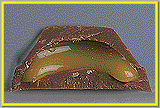
(http://www.sci.mus.mn.us/sln/tf/c/crosssection/namethatbar.html)
Students attempt to identify popular candy bars based on their cross
section, allowing for observation and classification. The
Science Learning Network has many other activities that are
student oriented.

(http://shuttle.nasa.gov/index.html/)
An informational site detailing all the shuttle trips. This web site
can lead students to daily updates, as well as provide opportunities
for students to learn about and work within the space program.
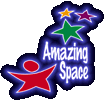
(http://oposite.stsci.edu/pubinfo/education/amazing-space/hdf-top-level.html)
An interactive site that allows students to compare their
observations with those of NASA scientists. The
Space Telescope Science Institute includes a number of
interactive activities and research information.
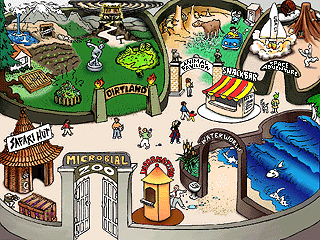
(http://commtechlab.msu.edu/CTLProjects/dlc-me/zoo/)
Invites students to actively explore the hidden world of microbes
through an appealing, fun interface. The
Digital Center for Microbial Ecology also highlights a number of
other microbe activities.
(http://www.cotf.edu/ETE/scen/scen.html)
In this activity, students can use satellite images that are just a
few hours old to determine weather conditions now, and predict the
weather. Exploring the
Environment covers a number of earth science lessons and
activities.

(http://www.planemath.com/activities/planecapacity/planecapacity1.html)
This activity uses reasoning and math skills. How many people can
board your plane and still fly? Plane
Math is a way for students to learn cool things about math and
aeronautics.
(http://seds.lpl.arizona.edu/nineplanets/nineplanets/nineplanets.html)
Gives an overview of the history, mythology, and current scientific
knowledge of each of the planets and moons in our solar system. Each
page has text and images, some have sounds and movies, most provide
references to additional related information. If you don't have time
for the full tour, try The
Express Tour
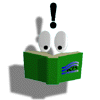
(http://wings.ucdavis.edu/Book)
This is an electronic multimedia textbook that presents a
comprehensive study of the science of aeronautics that can be used at
any reading level: beginner, intermediate, advanced, and instructor.
This is a great resource for the science teacher to use as a
reference or to self-pace students through aeronautics. It also
includes links to the curriculum, lesson plans, and activities.
(http:www.aero.hq.nasa.gov/edu/index.html)
This is a basic guide to how things fly. You can learn what makes an
airplane fly, a balloon float, or a spacecraft stay in orbit. It
includes terms, demonstrations, and activities that students can use
in and out of the classroom. It also links to NASA's
Spacelink.
(http://www.middleschool.com/virtual/classroom/lessons/sports/frisbee.html)
This is a lesson plan that covers gravity, Bernoulli's Principle, and
flight as they pertain to frisbee product designs. Students will
examing and list properties of different frisbees. It also links to a
Middle School Page with
more activities and ideas for teachers.
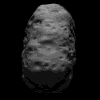
(http://www.tufts.edu/as/wright_center/index2.html)
This is an interactive simulation of what would occur if an asteroid
hit the earth. Students could go back in time to see what killed the
dinosaurs or see if they could save the Earth. Included are different
options that the student could choose with different consequences. It
also links to the Wright
Center with many resources for students and teachers.
(http://worldflight.org/youcansoar/resources/fly.fun.html)
This page includes three activities to help students learn how things
fly while having fun: How Things Fly, The Great Paper Plane Races,
and Name That Part. It also links to the Amelia
Earhart Website with more teacher resources and activities to
teach the concepts of flight.
(http://www.mcrel.org/whelmers/whesafe.html)
This page gives the teacher rules to use in the science classroom to
assure student safety.
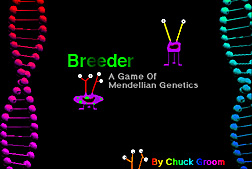
(http://www.sccs.swarthmore.edu/~ceg)
An interactive program that uses Mendelian Genetics to breed
aliens.
